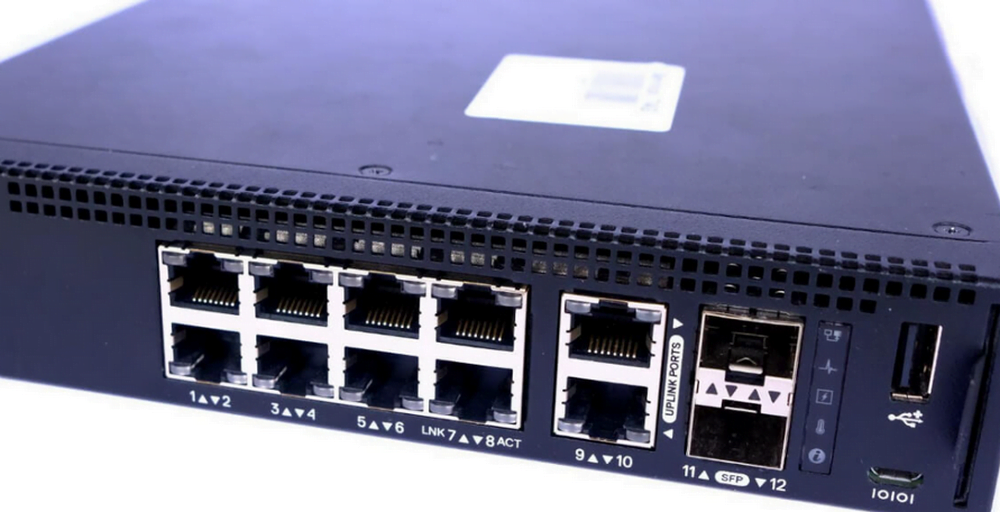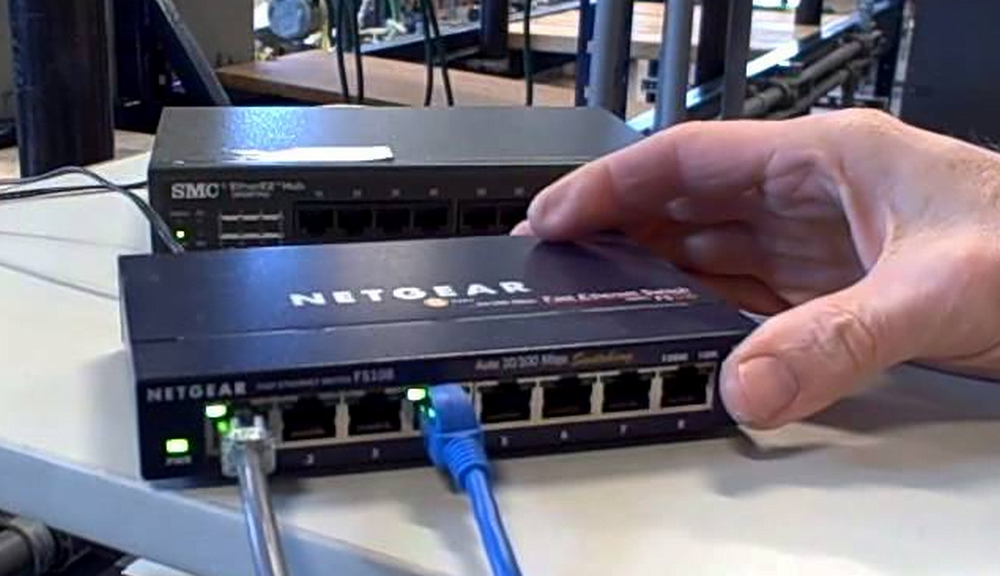Ethernet splitter: As a society, we cannot imagine our lives without Internet communication in the 21st century.
It is possible to do virtually everything at home and in the office by using Ethernet connections, such as shopping, letter writing, and business correspondence.
An Ethernet switch, or a Gigabit Ethernet splitter, as we commonly call them, is a networking device that is used primarily to connect a computer or a network device to another.
There is a significant difference between the two devices. Let’s look at Ethernet switches versus Ethernet splitters.
ETHERNET SPLITTERS
There are Ethernet splitters that can allow users to run one cable through a wall, floor, or ceiling, instead of two.
However, users of your equipment will still need to use two cables in the rooms where the equipment is located. This will have to be accomplished by using a pair of Ethernet splitters.

If you have a router in Room A and a computer and a printer in Room B, but only one ethernet port in each room, it would be difficult for you to connect them.
The first network splitter you need to use is the one that comes out of your router and connects both to the router. In Room B, connect the computer and printer to the other splitter, and then hook that up to the other wall jack.
While these are great at doing the job they were designed to do, they do not split a single Ethernet line between them.
Usually what people who stumble upon ethernet splitters are looking for is something that will divide an ethernet line. Instead of using ethernet splitters, we must use network switches for that purpose.
Functionality:
It is important to note that Ethernet splitters follow the 100 Base T standard, which is why they support two cables.
In order to un-split the ethernet connection when you have to connect the ethernet cables to another device, you will need another splitter. If you have a small setup, such as two devices connected to a network, you might prefer to use an Ethernet splitter.
Key Benefits
- Two outputs can be obtained from one cable
- It’s easy to use and has a very simple design
ETHERNET NETWORK SWITCHES
Internet modems and routers connect network switches. Users can connect several computers or other machines to the switch via its various ports.
However, the Internet is still connected to all of those machines over the same modem/router port, so how does this work exactly?

According to the previous paragraph, Ethernet signals can’t be divided like audio/video signals. In order to work around this problem, network switches are used to transfer signals back and forth at high speeds (hence their name).
As an example, suppose you are connected to a network switch with two computers, one watching Netflix, the other checking emails.
There is only one active connection at any given time since both computers are pulling their Internet signal from the same source. Switching back and forth between PCs gives each a turn accessing the internet.
These signal changes happen at lightning speeds, with dozens of them per second. They are barely noticeable to the naked eye.
Whenever one switch is shared by many machines, the Internet speed may be slowed down. At some point, almost everyone has noticed that running more than one machine at once slows things down.
But not all machines perform the same tasks. Streaming movies on a group of machines will consume a huge amount of data and will slow them down much more than reading news stories.
Your Internet service provider will also determine how much lag (if any) you will experience.
Functionality:
Afterwards, you can connect further devices by connecting an Ethernet cable to the router.
Key Benefits
- A 80% energy savings can be achieved with this technology
- Made of metal, so it’s durable
- The ports are eight
- Feature of plug and play
- Warranty for life
ETHERNET HUB
Ethernet hubs are typically networked hardware devices used to link multiple Ethernet devices while making them appear as a single network segment, and are also referred to as a network hubs, active hubs, multiport hubs, repeaters hubs, or merely hubs.

Ethernet hubs typically have several different ports that allow them to link segments of local area networks (LANs).
Data packets are copied as soon as they reach one port so that all segments can see the packets.
As Ethernet hubs have become obsolete, network switches have largely replaced them. These types of devices are used only by older, specialized applications.
Functionality:
The Ethernet hub is an easy tool to use. The half-duplex communication prevents simultaneous sending and receiving of data.
Key Benefits
- Eco-friendly
- There are five ports available
- When used, very quiet
- An easy way to get started
- Warranty is good
What Is the Difference Between an Ethernet Switch and a Splitter?
An Ethernet switch is useful when a network includes multiple devices, for instance, a computer with a video game console, a printer, etc.
In addition to that, a general switch has to have a power input for it to be able to divide an Ethernet signal into different signals, and the signals will be able to work simultaneously. The switch allows different devices to be interconnected and to function simultaneously as a result.
It is not necessary to connect a power supply when using an Ethernet splitter. Additionally, the Ethernet splitter should be connected in pairs together. These devices physically assist in dividing an Ethernet signal into two segments.
You need splitters if, for example, you want to connect two computers in one room, one at the switch, and one at the router.
As an alternative to using two Ethernet splitter cables from one room to another, the splitters can physically split one Ethernet cable into two to connect the computers and the switch.
In order to understand how to use an Ethernet splitter, there is an essential principle to bear in mind.
What is the difference between an Ethernet Switch and Hub?
The devices we have been discussing earlier perform different functions, as we said earlier. Although it is true that Ethernet hubs are becoming increasingly obsolete, network switches are replacing them and replacing them with network routers.
The hubs are still considered to be important in a wide range of situations and applications.
In this section, we will be looking at whether you should choose a hub or a switch when it comes to ethernet connectivity. The different applications of Ethernet switches and hubs have been discussed.

There is a growing trend where Ethernet switches are seen as a superior alternative to Ethernet hubs.
You can, therefore, choose an 8 port switch if you have a small family instead of using a hub that is nonetheless becoming obsolete.
Additionally, a 1GB switch or an Ethernet switch with a larger capacity can be used.
What is the difference between a switch, modem, splitter, and bridge?
Modem vs. Switch
A switch and a modem are two devices that are commonly used in networking. Their fronts or backs have physical ports that serve to connect to computers, supply power, and display their working status using LED lights. Routers are often used to connect a switch and a modem.
An ISP’s modem can connect to a router on one end (local network) and a switch on the other (ISP).
The main difference between modems and routers is that modems are used in the home for connecting to the internet and your internet service provider.
These switches are typically found in large networks, such as those in enterprises, campuses and data centers. Their configuration options differ significantly from each other.
Bridge vs. Switch
A bridge is a type of network interconnection device that connects two network segments, much like switches operating at the data link.
They both improve network performance and security. Multiple devices can send data simultaneously through switches connected to the same network.
The router works as a bridge so computers can send data to multiple devices at the same time.
Most network bridges only have two or four ports in comparison with switches with tens of ports. A switch is able to connect a greater number of LANs, while a bridge can connect fewer networks.
FAQ: Frequently Asked Questions
These are some of the frequently asked questions related to the Ethernet Splitter vs Switch with complete information.
Do Ethernet splitters reduce speed?
While Ethernet splitters are inexpensive and appear to be a decent option, they do slow network traffic down. Your Ethernet-connected devices’ performance is likely to suffer as a result of this.
What’s the difference between a switch and a splitter?
The main difference between a Switch and a Splitter is as follows. To summarise, a switch is utilized when you want to share numerous sources with one display. When you have a single source that you want to share with several screens, you’ll need a splitter.
Can you use a network switch as an Ethernet splitter?
Ethernet splitters exist, although they function differently than other types of signal splitters. However, ethernet cables can be used with a different device called a network switch to achieve the same result.
Is Ethernet faster than WiFi?
Yes, the Ethernet connection is faster than the Wireless Connection and more reliable and secure.
Do Ethernet splitters weaken signal?
If the splitters are utilised in a 100Mbps network, the connection will not be slowed. However, if your router can deliver 1Gbps and you put a splitter in the middle, the bandwidth will theoretically be limited to 100Mbps.
This is end of this short guide.
Conclusion
In Ethernet splitter networks, switches and hubs are typically used together. By increasing the number of Ethernet ports on your network, you can extend your home or office network.
On the other hand, a network switch divides your network into smaller and less congested segments. The purpose of your network hub or switch will determine whether you should choose one or the other.
And of course, you can as well purchase an ethernet splitter if you want to split a single ethernet connection to create additional connections.
Now that you perfectly understand how an ethernet switch, splitter, and hub works, you can easily optimize your network in a way that allows you to work in a much more efficient and secure way.
Related Articles:
Console Vs Gaming Laptop: Which One is Better For Gaming
NVIDIA GeForce Experience Error Code 0x0001 [Resolved]
Printer is Offline How To Fix [Complete Steps]
How to Update Windows 10 Assistant
How to Reset Network Settings on iPhone
How To Clean Mouse Pad: Ultimate Guide
How to Make Compass in Minecraft For Best Navigation
How To Print On Mac – Step by Step Guide
You Can Do That Git on GitHub ! No Its Impossible
Use This Process to Save Files to WebP in GIMP